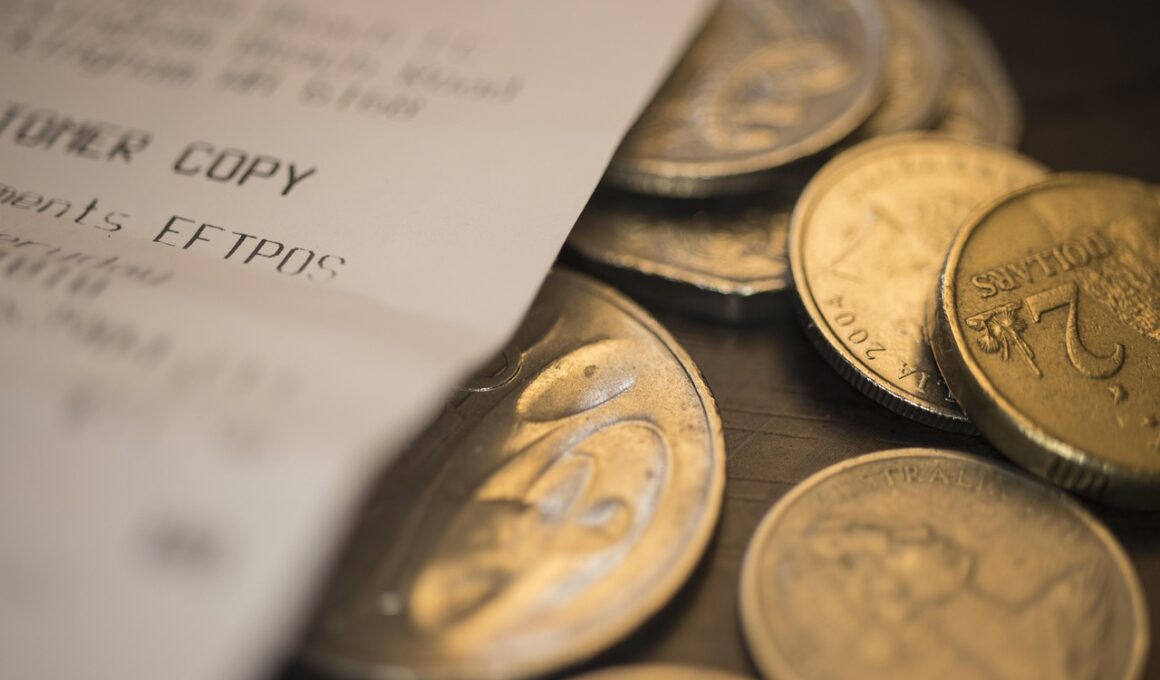Customization Options in Leading Budgeting Apps Reviewed
When it comes to managing personal finances, choosing the right budgeting app can significantly impact your experience. Effective budgeting apps offer a range of customization options that cater to individual needs and preferences. One essential aspect is the ability to create personalized categories for spending and income. For instance, users can allocate their expenses into various categories such as groceries, utilities, and entertainment. Moreover, some apps allow customization in the reporting features, enabling users to generate tailored reports that highlight specific metrics important for their financial assessment. Additionally, setting up reminders for upcoming bills or spending limits further enhances the user’s control over their budget. Apps like Mint and YNAB take customization a step further with features that allow users to adjust interface layouts, themes, and daily summaries that suit their preferences. This personalized approach not only aids in better budgeting but also provides motivation to achieve financial goals. Overall, the versatility found in these customization options allows users to tailor their budgeting journey in a way that is both efficient and engaging, making financial management less of a chore and more of a rewarding experience.
As we progress in the analysis of budgeting apps, it becomes clear that user experience vastly depends on available integrations. Many leading apps, including PocketGuard and GoodBudget, provide integration options with bank accounts and credit cards. This integration simplifies tracking spending by automatically importing transactions, which can be further customized based on user-selected preferences. Users can easily label or categorize transactions as they sync, ensuring expenditures are allocated correctly. Another advantage of these integrations is real-time updates, allowing individuals to monitor their financial status continuously. Moreover, some apps offer integrations with investment accounts and savings tools, broadening the budget tracking spectrum. When these features are combined with customizable budgets, users can dynamically adjust their spending plan to meet ongoing financial goals. The ability to add notes or tags to transactions also enhances user engagement and awareness, helping to identify spending habits over time. Furthermore, several budgeting apps allow users to personalize alerts or notifications regarding their finances. This combination of integrations and customizable features creates a comprehensive ecosystem for managing personal finances more efficiently than ever before.
Critical Focus on User-Friendly Interfaces
Another crucial aspect of leading budgeting apps is their user-friendly interfaces designed to enhance the customization experience. A clean, intuitive layout allows users to navigate through different features without feeling overwhelmed. Navigation menus that can be tailored to highlight frequently used features or tools make a significant difference in user satisfaction. For instance, apps like Wally and EveryDollar provide visually appealing dashboards where users can receive prompts or guidance on managing budgets effectively. Customizable dashboards allow users to prioritize information that matters most to them, showcasing pie charts or graphs to visualize spending trends quickly. Those who prefer a simplified interface can often opt for minimalistic views that focus on essential budget categories. Also, advanced features can be hidden in settings for users who desire simplicity in their budgeting journey. Ultimately, an efficient and easily adaptable interface greatly contributes to a positive experience, reducing the frustration typically associated with financial management. When users can customize their interface seamlessly, they are more likely to engage regularly with their budget, facilitating better financial habits.
A key element of customization in budgeting apps is linked to goal-setting functionalities. Many apps, such as YNAB and Mint, enable users to establish personalized financial goals, be it saving for a holiday or paying off debt. Users can set specific targets and timeframes, adding an element of motivation to their budgeting journey. Customization here allows individuals to prioritize what matters most, whether that’s paying down credit card debt or building an emergency fund. Additionally, budgeting apps often provide guidance or recommendations based on the user’s goal settings. This feature enhances accountability and ensures users remain focused on their targets. Customizable goal tracking can also include progress bars or visual aids to keep users informed and motivated. Furthermore, goal-setting may lead to tailored suggestions to adjust spending patterns, making it easier to reach financial ambitions. Research indicates that users who actively engage with personalized financial goals are more likely to succeed in achieving them. By integrating this feature, budgeting apps not only enhance user experience but also play a pivotal role in shaping a user’s financial success.
Importance of Security and Privacy Features
Another significant consideration when evaluating budgeting apps is the level of security and privacy they offer. Given the sensitive nature of financial data, users should prioritize apps that provide robust security features. For example, many leading budgeting apps utilize bank-level encryption to protect user data during transactions. Furthermore, customizable security settings allow users to set up two-factor authentication, adding an additional layer of protection. Users should carefully review privacy policies and understand how their data will be used and shared. Some apps, such as Truebill and Mvelopes, highlight their commitment to user privacy by offering opaque data sharing practices and opting not to sell user information. Customizable alerts for unusual account activity can also enhance user confidence. Additionally, users should have the option to selectively share their data with financial advisors or other trusted individuals while maintaining control over their information. Overall, prioritizing security helps build trust between users and budgeting apps, contributing to their effective engagement. Users are more likely to reap the full benefits of budgeting when they feel secure in their data management.
A further area of exploration within budgeting apps lies in the community features that allow for peer support and sharing of best practices. Some budgeting apps integrate forums or discussion boards where users can exchange tips on effective budgeting strategies. Customization here can include selecting communities that pertain to specific financial situations, such as students or first-time homeowners. This collaborative environment fosters a sense of belonging and encourages accountability among users. Users can also opt to participate in challenges or gamification features, which often come with customizable goals and rewards. Engaging with a community helps mitigate the challenges of solo budgeting, providing motivation and inspiration. Many successful users share their stories, showcasing how they navigated obstacles and achieved their financial goals. This social aspect can substantially boost engagement levels, leading to consistent interaction with the app. Overall, the incorporation of community support features provides an additional layer of personalization that makes budgeting less lonely and more collaborative, emphasizing shared financial accomplishments.
Final Thoughts on Customization in Budgeting Apps
In conclusion, the rise of customization options within budgeting apps reflects the evolving needs of users seeking better financial management. These tools empower individuals to take control of their finances, offering personalized features that cater to diverse lifestyles and financial goals. Customization across various areas, from spend tracking to goal-setting and community engagement, fosters greater user commitment and success. As users explore different apps, it is essential to evaluate which features resonate most with personal preferences and financial objectives. A budgeting app that offers ample customization allows users to tailor their experience to their unique circumstances, improving overall effectiveness. These options also enhance the app’s intuitiveness, making it enjoyable and easy to use. Ultimately, the best budgeting apps blend functionality with personalization seamlessly, aligning with user needs throughout financial journeys. By prioritizing customization, users can transform their budgeting experience into a proactive and engaging process, leading to better financial habits and enhanced financial literacy. Therefore, investing time in choosing the right budgeting app can yield long-term benefits for achieving financial stability and success.
As we wrap up our exploration of customization in budgeting apps, it is vital to recognize the importance of user feedback in shaping future developments. Many leading budgeting app developers actively seek user input to refine their features based on real-world experiences. This feedback loop fosters a sense of community ownership among users. Developers can prioritize enhancements that matter most to their clientele, ensuring that customization options evolve to meet changing financial landscapes. Furthermore, staying updated with industry trends allows developers to implement innovative features that address emerging user needs, which is often reflected in the changing demographic of users seeking financial tools. A commitment to continuous improvement helps keep budgeting apps relevant and engaging in a rapidly changing digital world. Users are encouraged to participate in surveys or forums to express their opinions on potential new features or enhancements. By sharing their experiences, users can significantly influence how budgeting apps cater to their diverse requirements and preferences, enhancing the overall experience. Ultimately, the future of budgeting apps will be shaped by a collaborative approach involving both developers and users, ensuring that personalization remains at the forefront of financial management.


